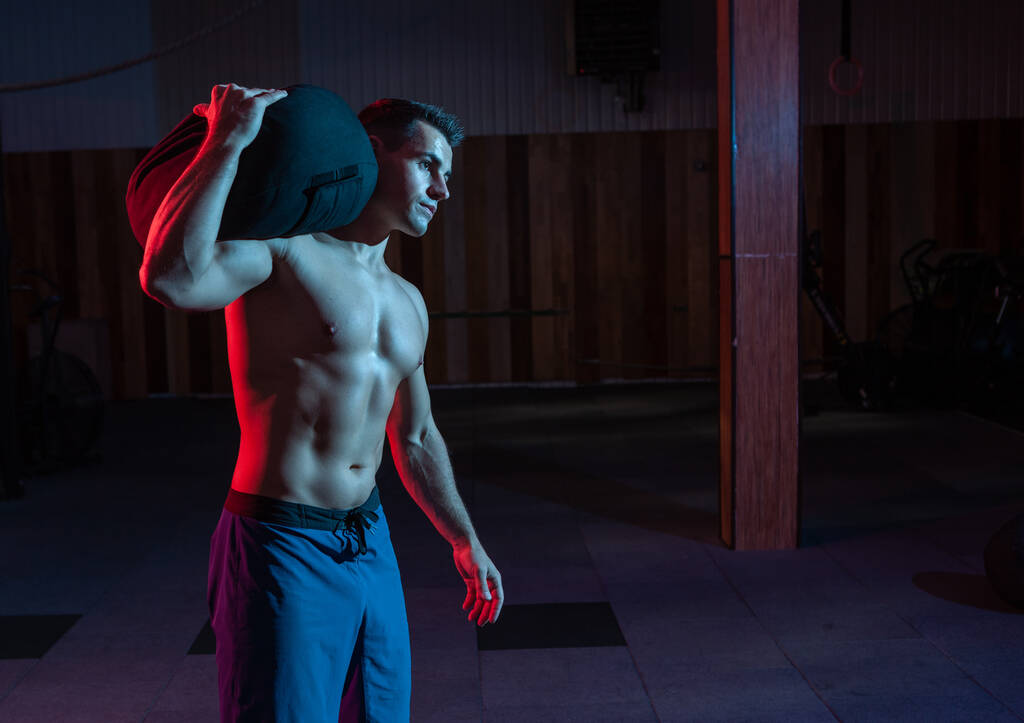Mastering Heavy Bags vs. Punching Bags: A Comprehensive Guide
September 18, 2023

Do you find yourself yearning to release stress, tone your muscles, and unleash your inner warrior? Look no further than heavy bags and punching bags! These powerful tools are the champions of the fitness world, providing a full-body workout while letting you unleash your inner Rocky Balboa. But wait a minute, aren't heavy bags and punching bags the same thing? Ah, my friend, let's dive into the epic clash of these two titans and explore their unique characteristics.

Understanding the Distinctions Between Heavy Bags and Punching Bags
Heavy bags and punching bags may seem interchangeable, but there are discernible differences that set them apart. So let's break it down, shall we?
When it comes to combat sports and martial arts training, having the right equipment is essential. Heavy bags and punching bags are two common tools used to enhance skills, build strength, and improve technique. While they may serve similar purposes, they each have their own unique characteristics and benefits.
Exploring the Different Types of Heavy Bags
Heavy bags come in various shapes and sizes, each designed for specific training objectives. The classic heavy bag is a cylindrical beast that tests your power and technique, perfect for honing your punches and kicks. Its sturdy construction allows you to unleash your full force without worrying about damaging the bag.
If you find strength and conditioning more to your liking, you might opt for a banana bag. This curvaceous wonder lets you practice hooks, uppercuts, and all sorts of devastating blows. Its shape allows for a more realistic target, simulating the human body's curves and angles.
Then there's the dreaded water-filled heavy bag, a wavy monster that mimics the feel of hitting a human body. It challenges your precision, as it swings unpredictably with every strike. This type of bag is excellent for developing accuracy and timing, as you need to adjust your technique to account for its movement.
And for those warriors seeking the ultimate challenge, the teardrop heavy bag combines the best of both worlds, demanding accuracy and power. Its unique shape provides a smaller striking surface, forcing you to be precise with your strikes. This bag is often used by experienced fighters who want to push their skills to the limit.
Choosing the Right Punching Bag for Your Fitness Goals
Punching bags, on the other hand, are a diverse group designed for specific purposes. The speed bag, a small, agile orb, is perfect for improving hand-eye coordination, agility, and rhythm. Hang it up, and watch as it dances to the rhythm of your punches, bobbing and weaving in a mesmerizing display of grace. The constant movement of the speed bag challenges your reflexes and helps you develop quick and accurate strikes.
For those looking to train like a true professional, a double-end bag is a must-have. Its fast and unpredictable movements mimic the head and body movements of your opponents, preparing you for the ring. This bag is ideal for practicing defensive maneuvers, footwork, and counterattacks. It requires precision and timing, as you need to hit it at the right moment to maintain its rhythm.
Kickboxing fanatics will find solace in the Muay Thai bag, a longer and slimmer bag that encourages powerful kicks and knee strikes. This bag allows you to unleash your lower body strikes with full force, helping you develop strength and technique in your kicks and knees. Its length also allows for practicing clinching techniques, a vital aspect of Muay Thai.
Whether you choose a heavy bag or a punching bag, both have their own advantages and can greatly enhance your training experience. It's important to consider your specific goals, skill level, and preferences when selecting the right bag for you. Remember, the bag you choose will become your training partner, pushing you to new limits and helping you become a better fighter.
Essential Equipment for a Punching Bag Workout
Before engaging in an epic bout with your punching bag, you need to equip yourself with the necessary tools. Let's explore the must-have gear that will take your workout to a whole new level!
Must-Have Gear for an Effective Punching Bag Session
First and foremost, you need hand wraps to protect your delicate knuckles. This vital accessory supports your wrists and prevents injuries. Hand wraps are typically made of a stretchable fabric that you can wrap around your hands and wrists, providing a layer of cushioning and support. They also help to keep your gloves in place during intense training sessions.
Don't forget the boxing gloves! Choose a pair that fits snugly, protecting both your hands and the precious bag from unnecessary damage. Boxing gloves come in various sizes and weights, so it's important to find the right pair for your needs. The padding in the gloves absorbs the impact of your punches, reducing the risk of hand injuries. Additionally, gloves with a secure wrist closure offer extra stability and support.
For enhanced footwork and stability, invest in a good pair of boxing shoes. These lightweight wonders provide optimal traction and support, allowing you to move like a panther in the ring. Boxing shoes are designed with features such as non-slip soles and ankle support to help you maintain balance and agility during your punching bag workout. They also offer cushioning to absorb shock and reduce the strain on your feet and ankles.
And last but not least, a sturdy bag stand or hanging apparatus is essential for mounting your chosen bag. You wouldn't want your bag to end up on the floor mid-punch, would you? Bag stands are typically made of durable materials like steel and can be easily assembled in your home or gym. They provide a stable and secure platform for your punching bag, allowing you to focus on your technique without worrying about the bag falling or swinging excessively.
When selecting a hanging apparatus, consider factors such as the weight capacity, adjustability, and the type of bag it can accommodate. Some hanging apparatus options include ceiling mounts, wall mounts, and heavy-duty chains. Ensure that the hanging apparatus is installed correctly and securely to avoid any accidents during your workout.
By investing in the essential equipment mentioned above, you can create a safe and effective environment for your punching bag workout. Remember, proper gear not only protects you from injuries but also enhances your performance, allowing you to unleash your full potential and achieve your fitness goals.
Preparing Your Body: Stretching for Bag Work
Now that you're fully equipped, it's time to prepare your body for the glorious battle ahead. Stretching is key to loosening up your muscles, increasing flexibility, and reducing the risk of injury. Let's explore some dynamic stretches that will have you feeling as limber as a gymnast.
Dynamic Stretches to Warm Up Before Hitting the Bag
Start by jogging on the spot, gradually increasing your speed. This will get your blood flowing and warm up your entire body. Then, perform some arm circles, swinging your arms in small and large circles to activate your shoulder joints. To wake up your lower body, do some high knees, lifting your knees towards your chest as you jog in place.
Next, indulge in some leg swings, holding onto a wall or a partner for support. Swing your leg forward and backward, and then side to side, allowing your hip and groin muscles to loosen up. Finish off with some trunk twists, rotating your upper body from side to side, unleashing your inner dynamo.
Getting Started: A Beginner's Guide to Punching Bag Workouts
It's time to unleash the tiger within and embark on your punching bag journey. But first, let's get familiar with some basic punching techniques that will make you feel like the next boxing sensation.
Basic Punching Techniques for Beginners
The jab, your first line of attack, is a straight punch aimed at your opponent's head or body. Keep your non-dominant hand near your face for protection, and extend your dominant hand, rotating your wrist slightly at the moment of impact. Next, we have the cross, a powerful punch where you rotate your hips and shoulder while driving your dominant hand forward.
To add some zest to your arsenal, unleash some hooks! Bend your elbow at a 90-degree angle and pivot your hips, unleashing a stunning sideways punch. And let's not forget the uppercut, a devastating punch that comes from below. Bend your knees, engage your core, and drive your fist upward, targeting your opponent's chin.
Maximizing Your Workout: The Ultimate Heavy Bag Routine
Now that you've mastered the basics, it's time to take your heavy bag workout to the next level. Prepare yourself for a high-intensity interval training session that will leave you sweating, pumped up, and feeling like a champion!
High-Intensity Interval Training with Heavy Bags
Begin with three minutes of warm-up, lightly tapping the bag to get in your rhythm. Then, unleash your combination punches for three minutes straight, with power and precision. Hooks, jabs, crosses, and uppercuts -- every punch you can muster!
Follow this with a one-minute round of intense cardio, engaging in activities such as jumping jacks, burpees, or shadow boxing. This will elevate your heart rate, ensuring you burn those calories like a fiery furnace. Repeat this cycle for a total of three rounds, and feel the burn in the best way possible.
Circuit Training with Heavy Bags: A Full-Body Challenge
If you're craving a workout that targets your entire body, look no further than circuit training with heavy bags. This fierce routine will test your strength, endurance, and mental fortitude. Are you up for the challenge?
Combining Strength and Cardio in a Heavy Bag Circuit
Start with a round of jabs, crosses, and hooks for three minutes, focusing on form and power. Then, switch it up and perform a set of bodyweight exercises such as push-ups, lunges, and squats for one minute. Repeat this cycle for five rounds, alternating between heavy bag work and bodyweight exercises.
Remember, my aspiring warriors, the key is to push yourself to your limits and embrace the burn. Take short breaks between rounds to catch your breath, then dive back into the fray. Your body will thank you for this full-body challenge!
Cooling Down: The Importance of a Proper Post-Workout Routine
Congratulations, warrior! You've conquered the heavy bag, dominated the punching bag, and emerged stronger than ever. But before you call it a day, remember the significance of a proper cooldown to prevent muscle soreness and promote recovery.
Start by slowing down your movements, gently tapping the bag to ease the tension. Then, shift into static stretches, focusing on your upper and lower body. Stretch your triceps by extending one arm overhead, reaching towards the opposite side. For your legs, go for a quad stretch, pulling your foot towards your glutes and feeling the delicious stretch in your thigh.
And finally, take a moment to savor your accomplishments. Reflect on your progress, bask in the endorphins flooding your body, and smile at the victories you've achieved.

Final Thoughts
In the thrilling clash between heavy bags and punching bags, there is no winner or loser. Each offers a unique training experience that caters to different goals and preferences. Whether you embrace the raw power of heavy bags or finesse your skills on punching bags, the important thing is to find joy and satisfaction in your workout. So my fellow warriors, choose your weapon, gear up, and embark on a journey of strength, resilience, and endless triumphs!

 Back to Blog
Back to Blog